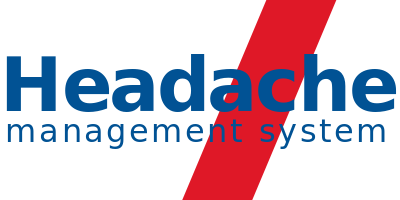Epidemiology & Diagnosis
In patients with migraine or tension-type headache, regular frequent use of acute treatment can result in exacerbation of the pre-existing primary headache.
Medication overuse headache (MOH) is classified as a chronic headache disorder. The headache occurs on more than 15 days a month for at least 3 months, affecting between 1-2% of the general population and, up to 20-50% of the chronic headache population.
MOH has been recognized since the 1940s and is a worldwide issue resulting from an interaction between frequently used acute headache medication in a susceptible patient.
Majority of patients improve on withdrawal of the overused medication.
All medications used to treat an acute headache can result in medication overuse headaches. Triptans, opioids and combination analgesics are likely to result in development of MOH more rapidly (treatment taken on 10 days or more per month) as compared to simple analgesics such as paracetamol (treatment taken on 15 days or more per month).
MOH occurs primarily in individuals with migraine or tension type headache and is generally of the same phenotype.
Overuse of triptans has been shown to cause MOH faster and with fewer doses compared with analgesics. The average interval between the first intake and daily MOH was 1.7 years for triptans, 2.7 years for ergots and 4.8 years for analgesics.
Patients must provide details of their usage of both prescription medications and of treatments taken over the counter.
Clinicians must specifically ask how many days in a month the patient takes medication for treating the acute headache and preferably correlate this with a headache diary.
In patients with a history of migraine or tension type headaches pain killer medication taken regularly for non-headache pain, such as joint or back pain, can result in medication overuse headaches.
The association between analgesic overuse and chronic pain is strongest for chronic migraine (odds ratio of 10.3).
Clinical features
Triptan overuse may result in daily migraine like headache or an increase in migraine frequency, whereas overuse of other analgesics may lead to daily headache with features of both migraine and tension type headache.
Many patients continue to take their acute medications despite the apparent lack of effect, while also reporting significant rebound in headache when acute medications are not taken.
The prevalence of comorbid psychiatric disorders, including depression and anxiety, is greatly increased in patients with MOH. In patients with medication overuse headache with pre-existing episodic tension type headache 67.7% have comorbid psychiatric disorders while in those with pre-existing migraine these were present in 53.7%. Depression and anxiety themselves also be risk factor.
Migraine is comorbid with depression and anxiety and these may be risk factors for developing MOH
Dependence related behaviour is noted in 60–70% patients and relapses are common.
Management
Patient education
An important aspect in the management of MOH is to increase awareness of the condition amongst health care providers as well as the general population.
Patients must be advised that restricting their acute headache medications to no more than 2 days in a week minimizes the potential of developing MOH.
Educational intervention is crucial and results in improvement in headache.
Comparison of advice alone with a structured detoxification program in patients with MOH is similarly effective.
The use of rescue medications, including steroids, does not improve outcomes.
Patients should be encouraged to seek preventive treatments for migraine as this can prevent the conversion from episodic to chronic migraine thereby reducing the risk of development of MOH.
Medication withdrawal
The MOH is unlikely to resolve unless the offending medication is stopped.
There is no difference in outcome with either abrupt or gradual withdrawal of the causative drug.
Outpatient medication withdrawal is as effective as inpatient detoxification.
Withdrawal headache usually lasts for 2-10 days from the time of complete cessation of the overused medication.
After medication withdrawal patient’s headaches gradually improve. This improvement can take up to 12 weeks.
The average duration of withdrawal headache appears to be shortest in patients overusing triptans (4 days).
Response to acute and preventive medications improves following withdrawal of the overused medication.
Prognosis
At 8 weeks following medication withdrawal 45% of patients report improvement in headaches while in 48 % the headaches remain unchanged299 (though it must be noted that this data is from a single trial).
Between 22 – 45% patients relapse back into MOH within 1 year, and 40 – 60% within 4 years of withdrawing from their overused medications.
The relapse rate is lower for patients with migraine and for individuals overusing triptans rather than analgesics (21% vs 71%).
Comorbid anxiety and depression can be associated with difficulty in medication withdrawal and a high risk of relapse following withdrawal of medication.
Response to migraine preventive medications improves following withdrawal of the overused acute headache medication.
There is no difference in outcome if preventive medication is started during or after withdrawal, as long as the acute medication is withdrawn. Preventive treatment is more effective once the overused medication is withdrawn.
The most important step in MOH management is to identify the diagnosis and inform the patient of the importance of reducing or stopping the offending medication, and no further measures may then be required.
